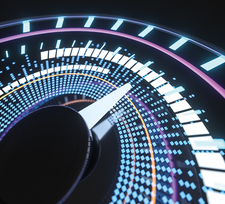Temperature and humidity sensor comparison
Remeasured

© Lead Image © Jian Fan, 123RF.com
Any application that collects a large number of measurements is bound to have some anomalous measurements, but good sensor breakouts should not output such values all the time. We tested eight temperature and humidity sensors for accuracy.
The data sheets of common temperature and humidity sensors tend to brag about accuracies in the range of a tenth of a degree. A closer look at 21 cases with eight different sensors shows which claims are true and which are just hot air from marketing.
It isn't complicated to wire up a sensor and read the values cyclically. If you've ever done so, you've probably had the feeling at some point that the numbers didn't add up. Deploying a second device only adds to the confusion, with deviations of up two units, which quickly gives rise to suspicions that your sensor lacks quality or was just too cheap, leaving you to wonder whether mysteriously high measured values are the result of a poor product or if the data sheets are incorrect.
I looked into both lines of thought and try to offer some recommendations. Up to four examples of eight common sensor devices lined up to face the test (Figure 1). Most devices are from BerryBase or Pimoroni and some of them have been around for quite a while. Table 1 shows an overview of the features, technical values, and prices.
[...]
Buy this article as PDF
(incl. VAT)
Buy Linux Magazine
Subscribe to our Linux Newsletters
Find Linux and Open Source Jobs
Subscribe to our ADMIN Newsletters
Support Our Work
Linux Magazine content is made possible with support from readers like you. Please consider contributing when you’ve found an article to be beneficial.

News
-
Parrot OS Switches to KDE Plasma Desktop
Yet another distro is making the move to the KDE Plasma desktop.
-
TUXEDO Announces Gemini 17
TUXEDO Computers has released the fourth generation of its Gemini laptop with plenty of updates.
-
Two New Distros Adopt Enlightenment
MX Moksha and AV Linux 25 join ranks with Bodhi Linux and embrace the Enlightenment desktop.
-
Solus Linux 4.8 Removes Python 2
Solus Linux 4.8 has been released with the latest Linux kernel, updated desktops, and a key removal.
-
Zorin OS 18 Hits over a Million Downloads
If you doubt Linux isn't gaining popularity, you only have to look at Zorin OS's download numbers.
-
TUXEDO Computers Scraps Snapdragon X1E-Based Laptop
Due to issues with a Snapdragon CPU, TUXEDO Computers has cancelled its plans to release a laptop based on this elite hardware.
-
Debian Unleashes Debian Libre Live
Debian Libre Live keeps your machine free of proprietary software.
-
Valve Announces Pending Release of Steam Machine
Shout it to the heavens: Steam Machine, powered by Linux, is set to arrive in 2026.
-
Happy Birthday, ADMIN Magazine!
ADMIN is celebrating its 15th anniversary with issue #90.
-
Another Linux Malware Discovered
Russian hackers use Hyper-V to hide malware within Linux virtual machines.

